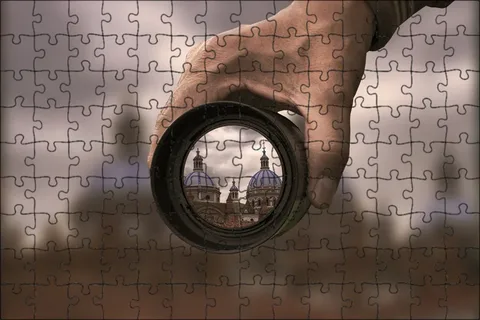
Photography is often seen as a way to freeze a moment, capturing a fragment of time that would otherwise fade into memory. For photographer Mark Favero, however, photography goes beyond mere preservation; it becomes a tool for storytelling, reflection, and advocacy. In his book, Feel – Northern State Hospital, Favero uses his lens to explore the intersection of history, emotion, and societal neglect. The result is a collection of images that not only document the physical decay of an abandoned asylum but also preserve the emotional truths tied to its history.
At its heart, photography is about storytelling. Favero’s images go beyond documenting the decay of Northern State Hospital; they tell the stories of the people who once lived there. Through rusted locks, peeling walls, and shattered windows, Favero captures more than just neglect; he captures confinement, isolation, and forgotten humanity.
These details serve as symbols of a bygone era when individuals struggling with mental health were hidden away, their struggles misunderstood or dismissed. The empty hallways whisper of lives lived in silence, and the crumbling infrastructure speaks to the emotional weight of neglect.
Favero’s photographs force us to ask difficult questions: What were the lives of these individuals like? How did society fail them? And what can we learn from their stories? His work challenges us to confront the uncomfortable truths that these spaces represent.
One of the most compelling aspects of Favero’s photography is its ability to connect the past and the present. Northern State Hospital, though long abandoned, still holds echoes of its history. These echoes resonate today in the ongoing struggles of mental health advocacy and stigma reduction.
Favero’s work invites viewers to reflect on how far society has come in its understanding of mental health; and how far it still needs to go. The physical decay of the hospital mirrors the emotional decay of neglect and misunderstanding. His photographs are a powerful reminder that while buildings crumble, the lessons they hold remain relevant.
By preserving the hospital through his lens, Favero creates a bridge that connects viewers to the past while urging them to consider the present. His work reminds us that history is not just something to remember; it’s something to learn from.
Favero’s photography is more than art; it’s advocacy. His use of light, shadow, and texture transforms the abandoned asylum into a visual narrative that is both haunting and beautiful. But beyond the aesthetics lies a deeper message: the need for empathy, understanding, and action.
Through Feel–Northern State Hospital, Favero raises awareness about the stigma surrounding mental health. The images of decay and abandonment are not just representations of a forgotten building; they are metaphors for the neglect faced by individuals with mental health struggles. His work encourages viewers to look beyond the surface and see the humanity that these spaces represent.
Art, as Favero demonstrates, has the power to inspire change. His photographs don’t just depict what was; they ask us to consider what could be. They challenge us to reflect on our own perceptions and biases and to advocate for a world where mental health is treated with the same importance as physical health.
Photography, as Favero shows us, is not just about capturing what’s in front of the lens; it’s about preserving what’s behind it. His images ensure that the stories of the hospital and its inhabitants are not lost to time. They serve as a visual archive, a way to remember and reflect on the past.
Preservation is not just about memory; it’s about responsibility. Favero’s work reminds us that by preserving the past, we can inspire change in the present and create a better future.
What makes Favero’s photography so powerful is its ability to make viewers see beyond the surface. At first glance, his images may appear to be simply about decay and abandonment. But a closer look reveals the layers of meaning hidden within.
The rusted locks, for example, symbolize confinement and the barriers that society places around mental health. The shattered windows reflect broken dreams and forgotten hopes. The vines creeping through the cracks remind us of nature’s resilience and the possibility of renewal.
Through these images, Favero asks viewers to confront their own assumptions. How often do we overlook the struggles of others? How frequently do we dismiss the importance of mental health? His work challenges us to see not just the physical decay of the hospital but also the emotional truths it represents.
Photography, at its best, makes us see what we might otherwise overlook. Favero’s work does just that, offering a fresh perspective on the intersection of art, history, and advocacy. As you explore his book, consider how you can use these lessons in your own life. How can you help preserve not just memories but also compassion and understanding?
Through Feel–Northern State Hospital, Mark Favero proves that photography isn’t just about capturing moments; it’s about preserving truths. His work shows the power of memory and the importance of empathy. By looking at the past through Favero’s lens, we are reminded of the potential for growth, renewal, and change.
© Copyrights 2024 Mark Favero. All Rights Reserved